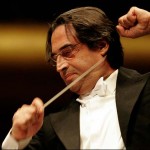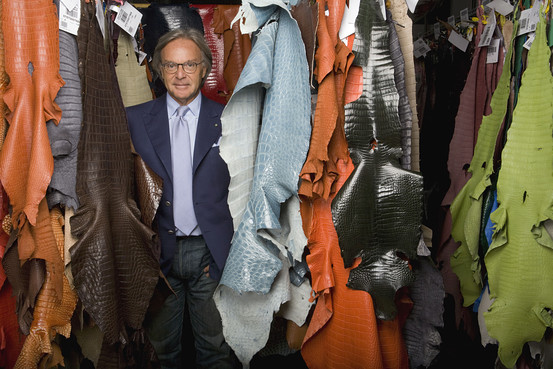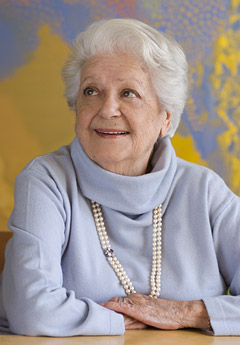
“An Elegant Snack”
Cristiano Berentz (1658 – 1722)

— Riccardo Muti, Music Director of the Teatro alla Scala

Six months after turning pro, Italian golfer Matteo Manasse became the youngest-ever European Tour winner at the age of 17, after winning the Castelló Masters Costa Azahor in Spain on Sunday.
“I’m not really thinking about [breaking records] at the moment, I’m still thinking about the European Tour win that I achieved, but I will probably think about the record in the future,” he told Sky Sports News. “I want to win more events, a major or a Ryder Cup is obviously the biggest dream a golfer can get.”
Manassero admitted that, like so many youngsters on the continent, he was inspired by Steve Ballesteros as a boy. “Seve Ballesteros has always been my idol. His personality and what he has done for golf and the tournaments that he won and they way he won them was different to other golfers,” he said.
Manassero was born in Negrar, in the Province of Verona. In 2009, at the age of 16, he became the youngest ever winner of the British Amateur Championship, defeating England’s Sam Hutsby in the final. The win qualified him for the 2009 Open Championship, where, playing alongside Tom Watson and Sergio García in the first two rounds, he made the cut and won the silver medal as leading amateur. He eventually finished tied for 13th place.
Manassero topped the World Amateur Golf Rankings on December 30, 2009 and remained number 1 for 18 weeks.
On April 9, of this year, Manassero beat Bobby Cole‘s record, which lasted since 1967, to become the youngest player ever to make the cut at the Masters Tournament, at 16 years and 11 months and 22 days. Manassero was nearly two years younger than Cole was when he made the cut at the 1967 Masters. Mannassero announced that he would turn professional shortly after the Masters and about two weeks after his 17th birthday. He made his professional debut at the BMW Italian Open. He officially turned pro on May 3, 2010.
Today it was announced that Mannassero has pulled out of this week’s Andalucia Masters at Valderrama to focus on getting a visa in time for next week’s HBSC World Championship in Shanghai.
He’s in Rome trying to get a visa to visit China for the $7 million tournament in Shanghai. Manager Gorka Guillen says Manassero “has still not obtained the necessary letter of invitation from the sports ministry to get a visa, and that remains the key issue.”
But for now Matteo is more concerned about math, history and science. “When I turned pro in May I was still studying at high school so I have had to do it online and via emails. I have homework every week and will do the exams at a high school in Turin. But next year I play my first full schedule so won’t have as much study.”
Wow.
The Wall Street Journal reports:
Italian luxury-goods mogul Diego Della Valle has increased his stake in Saks Inc. to 19.05%, becoming the biggest shareholder at the high-end U.S. retailer, according to filings with the Securities & Exchange Commission.

Signor della Valle is a colorful fellow and very successful Italian businessman. He made his fortune with two luxury shoe brands, Tod’s and Hogan.
Coincidentally, the Journal’s magazine ran an extensive article on the man and his company last week and had this to say:
Tod’s is the European carpetbagger of the American preppy look. The Italian luxury brand, which Della Valle built in the 1970s on the foundations of his family’s cobbler business, has become a staple of a way of dressing that idealizes weekends in the Hamptons and Cape Cod. Tod’s soft moccasins, their soles dotted with 133 rubber nubs, supplanted penny loafers to become the choice footwear pairing for all-American khakis and white button-down shirts.
As of 2:30 pm EDT today, Saks stock (SKS – NYSE) was up $0.86 or 8.5% since Wednesday’s close of $10.12. Now that Della Valle is the department store’s largest shareholder, could he assume a new role in life — that of White Knight?
Background article:
The Independent: Diego della Valle: Meet the Italian Ralph Lauren

Cooking at home today, I referenced Marcella Hazan’s Essentials of Classic Italian Cooking, as I seem to do more often than I realize. The book, published in 1992, is a fully revised and updated edition of The Classic Italian Cook Book (published in 1973) and More Classic Italian Cooking (published in 1976). So this classic collection of classic Italian recipes and techniques – nearly 40 years old – is now itself a classic.
Marcella Hazan has sold more than a million books – and with good reason. Beautifully written, she takes you step by step through Italian dishes from nearly every region of Italy. Her techniques are explained in vivid detail and she offers a fascinating glimpse into Italian culinary history.
In 2008 – at the age of 84 – she wrote an autobiography, Amarcord: Marcella Remembers. The Remarkable Life Story of the Woman Who Started Out Teaching Science in a Small Town in Italy, but Ended Up Teaching America How to Cook Italian. As The New York Times describes it, the book “offers for the first time a public glimpse into the professional and romantic relationship between a science teacher from a small Italian town in Emilia-Romagna and the Italy-loving son of Jewish New York furriers. It is a marriage that shaped how Italian cooking came to be defined in the United States.”
And this from Publisher’s Weekly:
In 1969 Hazan gave the private cooking class that launched her career as the Italian Julia Child. In an evocative memoir, she recounts her life from childhood to Florida Gulf Coast retirement. Hazan spent her earliest years on another coast, in Cesenatico, a village on the Adriatic; during WWII the family moved to a lake in the mountains between Venice and Milan. Fresh out of the university, she taught college math and science and met a young man who had returned to his Italian homeland after more than a decade in America. He loved food, and his worldliness and sophistication made a good match for the comparatively earthbound author. After they married, the couple moved several times between various places in Italy and America. During a long stay in New York, Hazan began to offer the Italian cooking lessons that later caught the attention of such chefs as New York Times food writer Craig Claiborne. This led to the writing and publication in 1973 of The Classic Italian Cookbook. Hazan’s memoir is a terrific history of the expansive, postwar period when Americans were still learning the difference between linguine and Lambrusco, and an engaging chronicle of professional perseverance, chance and culinary destiny.
Every cook — whether a professional or a home enthusiast who loves Italian cooking — should have at least one cookbook by Marcella. Her recipes and techniques inspired many of Bellavitae’s dishes, and I still often refer to her timeless advice at home.
Here are her cookbooks:
As part of her promotional book tour, she granted epicurious.com an interview and here are a few of my favorite quotes:
“When I go to a restaurant and they give me a very complicated, very beautifully arranged dish, I don’t think it’s food. I would like to ask the waiter to give me a camera to take a picture and afterwards tell him, ‘Now give me food, please.’ I don’t want to impress. I want to do something that is good. Try to make straightforward food and get it to the table.”
“I remember once I was explaining something about the butcher and I mentioned that when you have a piece of meat you have to cut against the grain because it’s a muscle. And when I said ‘muscle,’ everyone made a strange face. And I stopped and I said, ‘Well, what do you think that you are eating?’”
“Sometimes they overdo it. Before, they were serving the pasta that was gluey because it was overcooked. And so I said, no it has to be al dente. Now sometimes I go to a restaurant and the pasta is not cooked. It just got in the water for a moment and came out. That is too much!”
“Cooking brings out the taste. If you cook vegetables too little because you want them crunchy, they all have one thing in common: They taste like grass.”
On produce from the supermarket: “Those vegetables and fruits come from very far and naturally if they pick them at the moment they’re ripe they cannot [survive] a long time traveling. When they reach the store, if they look ripe, they are not ripe normally. What I mean is not ripe in the air, in the sun, attached to the tree. It is just ripe in the wrong way, so it’s not good. And that is happening very often with many vegetables and many fruits. Now we have the season of peaches and they look wonderful. After you come home, yes, they are soft, they are ripe, but they are not sweet because they did not have the time outside, attached to the plant to convert the juice into sugar.”
On why home cooking is important: “It is a way of bringing the people of the family together—to be together, to talk. And what is the best way to bring them? If you offer them good food. They enjoy it, they look forward to it, and that is why it is very important.”
Vinum Nostrum: Art, Science and Mythology of Wine in Ancient Mediterranean Civilizations
Florence’s Palazzo Pitti (Museo degli Argenti [Silver Museum]) currently features a fascinating exhibition where visitors are taken on a fascinating journey through the history of wine. Can’t make it to Florence? You can visit the exhibit’s excellent website.
The exhibition is divided into sections on Georgia and the Caucasian Region (where the grapevine was first domesticated), Ancient Egypt, the Near East, Etruria, Magna Graecia and the Italic World, the Routes of Dionysius, and Pompeii.
Visitors learn about the religious and cultural values associated with wine in the different civilizations, methods of production, the grapes used, how the grapevine spread throughout the known world, and how the Romans – the first civilization to turn winemaking into an industry – transported the product.
Many vessels that were made to hold wine are on display, the most important of these being a wine storage container from Georgia, which is 8,000 years old. It is the oldest known vessel for storing wine in the world and is on loan from the Georgian National Museum in Tbilisi.
Other original artifacts, sculptures, frescoes, paintings and mosaics, all of which contribute to the story of wine down the ages, are also on display. Artifacts from Pompeii have been particularly important in helping experts chart the history of wine production and consumption.
The exhibit runs through May 15, 2011.
Entrance fee is €10.00.
Hours:
Until October 30th: 8:15 am – 6:30 pm
October 31st: 8:15 am – 5:30 pm
November 2nd – February 28th: 8:15 am – 4:30 pm
March 1st – March 26th: 8:15 am – 5:30 pm
March 29th – April 30th: 9:15 am – 6:30 pm
Closed: First and last Monday of each month, December 25th and January 1st.
.

.
Theme: Food Express WordPress Food Theme is developed by Template Express.
Proudly powered by WordPress